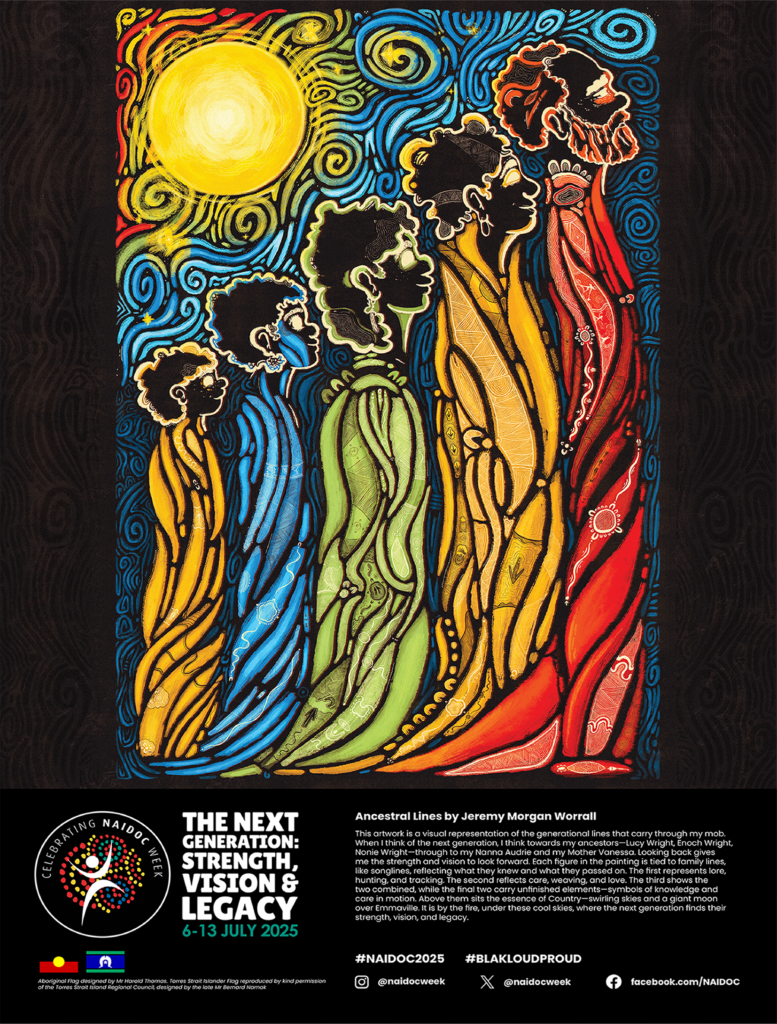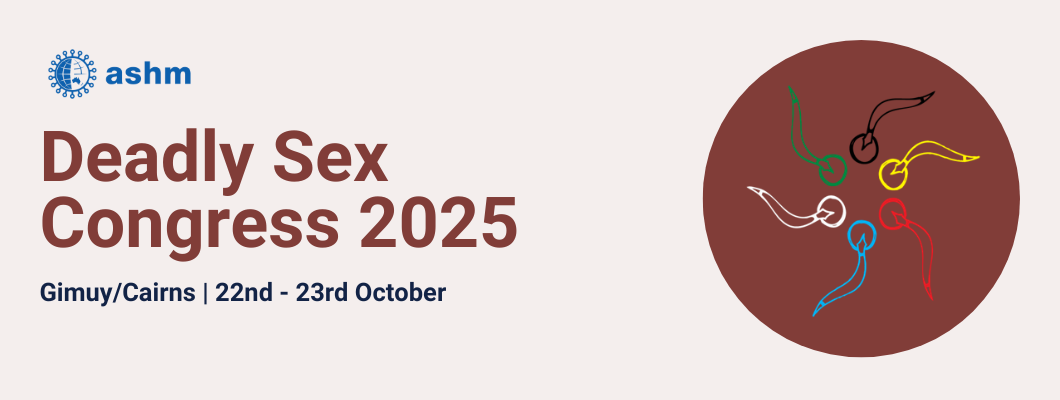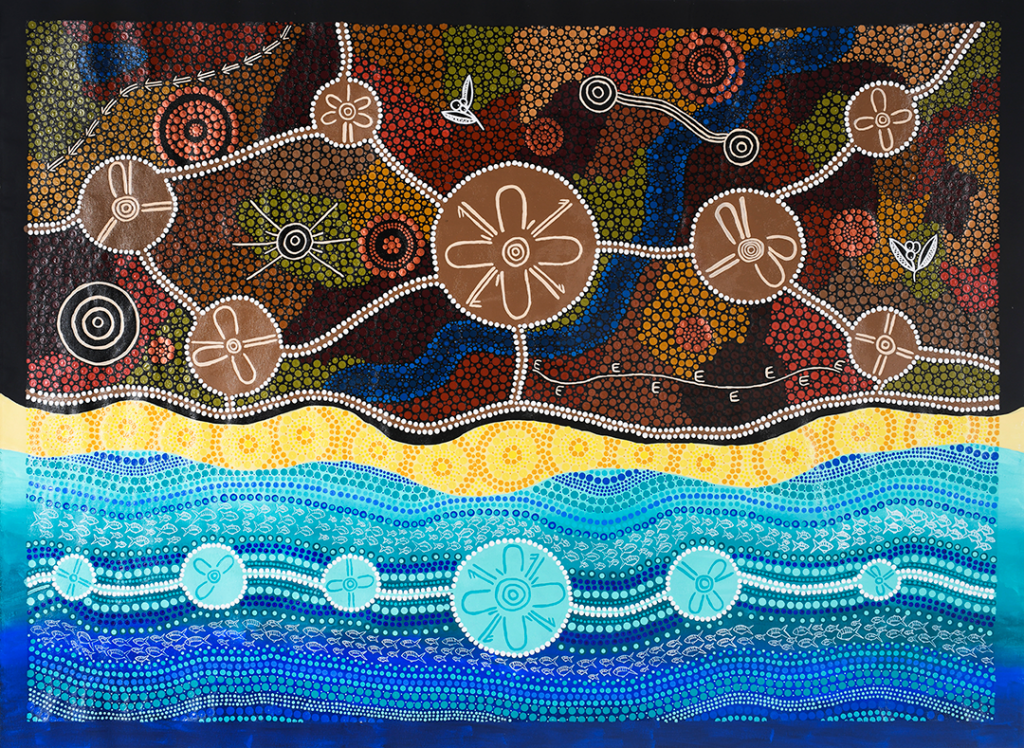ASHM is committed to continuing our reconciliation journey with an Innovate Reconciliation Action Plan (RAP), which will outline actions that work towards achieving our unique vision for reconciliation.
ASHM acknowledges the Traditional Owners of Country across the various lands on which we live and work.
We recognise Aboriginal and Torres Strait Islander peoples’ continuing connection to land, water, and community and we pay our respects to Elders past and present.
ASHM acknowledges Sovereignty in this country has never been ceded.
It always was, and always will be, Aboriginal land.
National NAIDOC Week celebrations are held across Australia in the first week of July each year, to celebrate & recognise the history, culture & achievements of Aboriginal & Torres Strait Islander peoples.


We are proud to walk alongside a growing network of Aboriginal and Torres Strait Islander organisations, leaders, and allies. These partnerships shape ASHM’s work, challenge us to do better, and help guide our journey towards equity in health and beyond.

Australian Indigenous Doctors’ Association

Congress of Aboriginal and Torres Strait Islander Nurses and Midwives
ASHM is actively contributing to the National Agreement on Closing the Gap, focusing on priority reforms that align with our role as a health educator and collaborator in the sector.
We’re committed to walking alongside Aboriginal and Torres Strait Islander communities, listening deeply, and embedding change that is measurable, meaningful, and sustained.
These actions reflect where we are – and where we’re heading.
We co-design training, resources, and projects with Aboriginal and Torres Strait Islander-led organisations and peak bodies. These partnerships are not one-off collaborations – they are grounded in mutual respect, ongoing engagement and shared outcomes.
We prioritise collaboration with Aboriginal Community Controlled Health Organisations (ACCHOs), ensuring our work supports – not duplicates or replaces – their leadership in delivering culturally safe and community-driven healthcare.
We are transforming our internal systems, policies, and culture to embed cultural safety, education, and accountability. All ASHM educational programs include a cultural safety content review, and we regularly review this content in partnership with Aboriginal and Torres Strait islander advisors.
We are improving how we manage and share our data, with respect for community ownership, context, and consent. Our aim is to use data in ways that empower Aboriginal and Torres Strait Islander-led decision-making and drive local impact. We support data sovereignty by adopting ethical data practices, ensuring community-governed information remains in the hands of those it represents. We work to improve how we collect, share, and interpret data in ways that empower-not exploit-communities.
ASHM is actively contributing to the National Agreement on Closing the Gap, focusing on priority reforms that align with our role as a health educator and collaborator in the sector.
We’re committed to walking alongside Aboriginal and Torres Strait Islander communities, listening deeply, and embedding change that is measurable, meaningful, and sustained.
These actions reflect where we are – and where we’re heading.

“Wiyunggir” Cleverman, by Bianca Monaghan
Bundjalung Cultural Experience
Mobile: 0403933845 | Email: [email protected]
The artwork I have created for ASHM represents our old ways, our Lore and our traditional medicine, embedded into the modern life of today’s Lore (law) and medicine. The middle circles represent our old traditional ways of Life passed down through the generations, the surrounding circles are the adaptions of the modern ways of our families living in today’s society. We will always be connected to the new and old ways no matter what we are doing or where we are.
The white berries represent our traditional medicines, and the “Wiyunggir” the cleverman that holds the lore of this medicine. The white dots represent the modern medicine that lives alongside our traditional ways of today. The bronze circles represent our sacred places hidden from society, blending into our way of life yet standing close to us.
The background flow and colours represent our cultural way of life, hunting, gathering, fishing, song-lines and waterholes. The colours of the sand and ocean represent our connection to the Torres Strait Islander people and their culture a connection that has been long-standing. Booglebeh (thank you).
Artist: Bianca Monaghan, Bundjalung, Family from Baryulgil.
External resources
Do you have something you’d like featured on this page? Please let us know by emailing [email protected]
ASHM Head Office - Sydney
Level 3, 160 Clarence Street Sydney, NSW 2000
Tel: (+61) 02 8204 0700
ASHM acknowledges the Traditional Owners of Country across the various lands on which we live and work. We recognise Aboriginal and Torres Strait Islander peoples’ continuing connection to land, water, and community and we pay our respects to Elders past and present. ASHM acknowledges Sovereignty in this country has never been ceded. It always was, and always will be, Aboriginal land.
The information provided on this website and its related websites and guidelines, and the resources made available by ASHM in any format or medium, are for general information purposes only and are not intended as medical advice or as a substitute for consultation with a qualified healthcare professional. While ASHM Health strives to provide accurate and current resources and information, the resources, information and guidelines made available by ASHM Health do not provide personalised medical advice, diagnosis, or treatment. Healthcare professionals should apply their clinical judgment and consider individual circumstances when using this information. To the extent permitted by law, ASHM Health disclaims all liability for any outcomes resulting from reliance on the information provided. For specific medical concerns, please consult a licensed healthcare provider.
ASHM Health | ABN 48 264 545 457 | CFN 17788 | Copyright © 2024 ASHM
Aboriginal and Torres Strait Islander people are advised that this website may contain images, voices, or names of people who have passed away.
We acknowledge the deep cultural significance of these representations and extend our respect to Elders past and present, and to all First Nations peoples accessing this site.